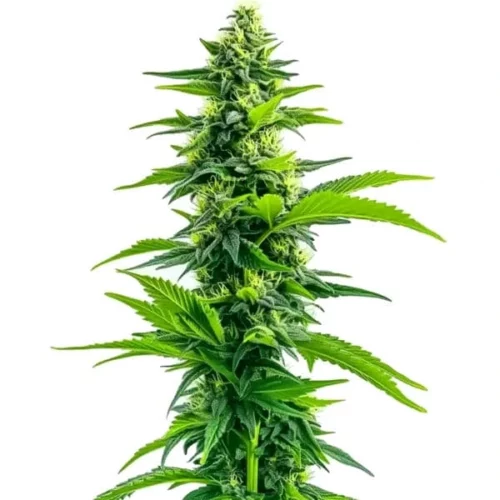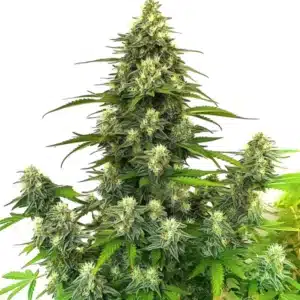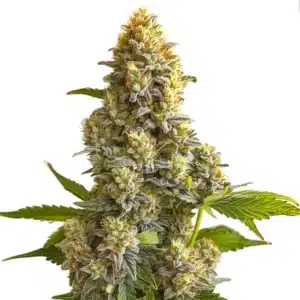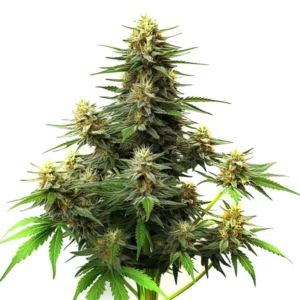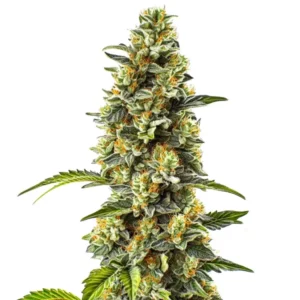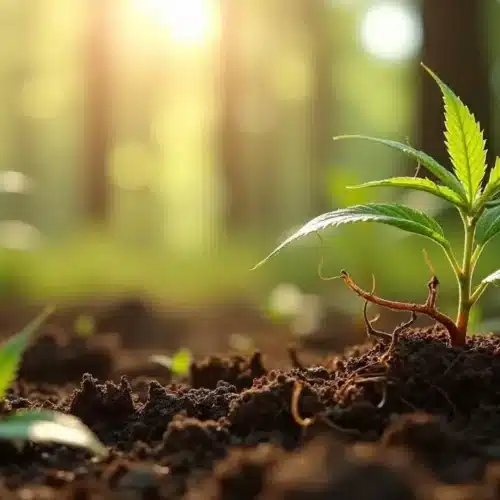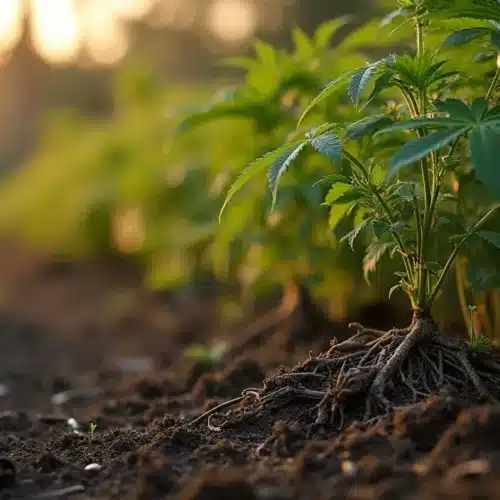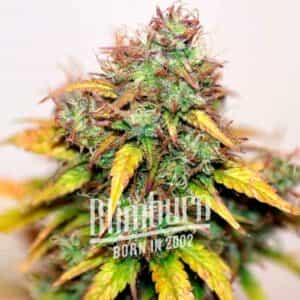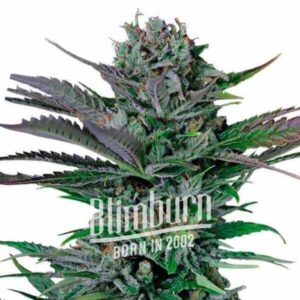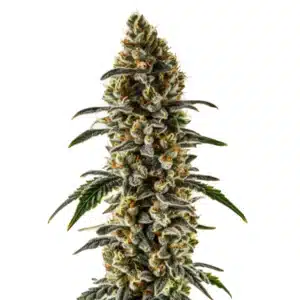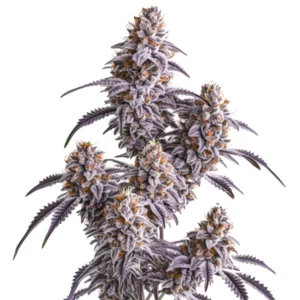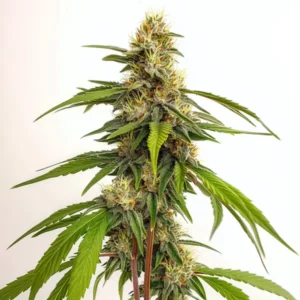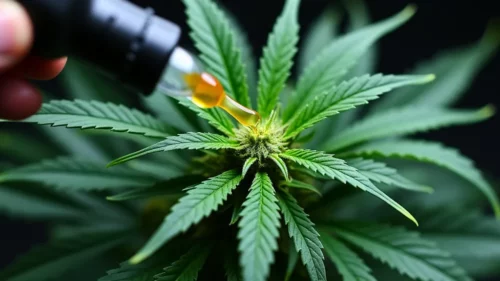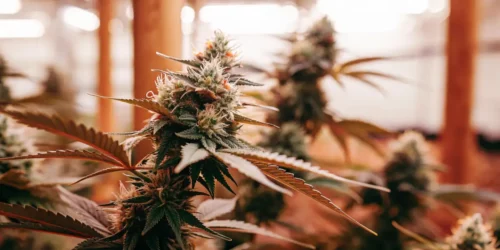The cultivation of cannabis (Cannabis sativa L.) has expanded globally due to its medicinal and recreational value. However, this growth comes with significant challenges, notably the prevalence of plant diseases that can adversely affect crop yield and quality. These diseases, their impact on cannabis cultivation, and the strategies for their prevention and management is essential for cultivators aiming to ensure the health and productivity of their plants.
The Importance of Healthy Cannabis Cultivation
Healthy cannabis cultivation is vital for maximizing yield, ensuring product quality, and minimizing economic losses. Diseases in cannabis plants can lead to reduced photosynthetic efficiency, impaired growth, and in severe cases, plant death, significantly affecting both yield and quality. Therefore, having in-depth knowledge of cannabis plant diseases, along with implementing effective management strategies, is essential for sustainable cultivation practices.
Recommended Strains
Acapulco Gold
 THC: 15% - 19%
THC: 15% - 19% Type of seed: Feminized
Type of seed: Feminized Phenotype: Mostly Sativa
Phenotype: Mostly Sativa Day to flower: 10 - 12 weeks
Day to flower: 10 - 12 weeks
Acapulco Gold Autoflower
 THC: 20% - 24%
THC: 20% - 24% Type of seed: Autoflowering
Type of seed: Autoflowering Phenotype: Mostly Sativa
Phenotype: Mostly Sativa Day to flower: 8 - 10 weeks
Day to flower: 8 - 10 weeks
Promos & Deals
Common Diseases Affecting Cannabis Plants
Cannabis Plant Diseases: Fungal Diseases
Powdery Mildew
Causes and Lifecycle: Caused by various species of the genus Podosphaera, powdery mildew thrives in both high humidity and dry conditions, making it a prevalent issue in many cultivation environments. Spores spread through the air and can infect plants even in the absence of water on leaf surfaces.
Symptoms: Initial symptoms include white, powdery spots on the upper surfaces of leaves, which can spread to cover the entire leaf and stem. Infected leaves may become yellow and dry, leading to reduced plant vigor.
Management Strategies: Managing powdery mildew involves increasing air circulation, reducing leaf wetness, and applying fungicides or biological controls. Implementing a regular cleaning regime and removing infected plant material promptly can also prevent the spread of this disease.
Fusarium Wilt
Causes and Lifecycle: Fusarium wilt is caused by Fusarium oxysporum, a soil-borne fungus that enters the plant through the roots and obstructs the water-conducting vessels, leading to wilting. The fungus can remain dormant in the soil for years, making it difficult to eradicate.
Symptoms: Symptoms include yellowing of the leaves, wilting, and stunting of the plant. The vascular tissue of infected plants may turn brown, visible in cross-sections of the stem.
Management Strategies: Management includes using disease-free soil or growing media, implementing crop rotation, and selecting resistant strains. Soil sterilization and the use of beneficial microbes such as mycorrhizal fungi can also reduce disease incidence.
Botrytis Cinerea (Gray Mold)
Causes and Lifecycle: Botrytis cinerea proliferates in cool, humid conditions, especially during the flowering stage when dense foliage and buds retain moisture. The fungus can infect through wounds or weak points in the plant and is capable of surviving on plant debris.
Symptoms: Gray mold is identifiable by its characteristic gray, fuzzy spores on infected buds, leaves, or stems. Infected buds may rot, while leaves and stems can develop water-soaked lesions.
Management Strategies: Effective strategies include reducing humidity, improving air circulation, and avoiding overcrowding. Infected material should be removed and destroyed immediately. Fungicides may be used as a preventive measure, though reliance on chemical controls should be minimized.
Cannabis Plant Diseases: Bacterial Diseases
Bacterial Leaf Spot
Causes and Lifecycle: Various bacteria, including Pseudomonas and Xanthomonas spp., can cause leaf spot. These bacteria are spread through water splashes, infected tools, or handling and can enter plants through damaged tissue or natural openings.
Symptoms: Symptoms manifest as dark, water-soaked spots on leaves, which may turn brown or black and become necrotic. In severe cases, the leaves may yellow and fall off.
Management Strategies: Management includes avoiding overhead watering, sanitizing tools and equipment, and removing infected plant material. Copper-based bactericides can offer some control but should be used judiciously to avoid buildup in the soil.
Crown Gall
Causes and Lifecycle: Agrobacterium tumefaciens induces crown gall disease, entering the plant through wounds. Once inside, it integrates a portion of its DNA into the plant’s genome, causing uncontrolled growth of plant cells.
Symptoms: The most obvious symptom is the appearance of round, tumor-like galls on roots and at the base of the stem. These galls can restrict water and nutrient flow, stunting plant growth.
Management Strategies: There is no cure for crown gall once a plant is infected. Prevention strategies include avoiding injury to the plant, using disease-free planting material, and practicing proper sanitation. Soil solarization and biological control agents, such as nonpathogenic strains of Agrobacterium, have shown some effectiveness in managing this disease.
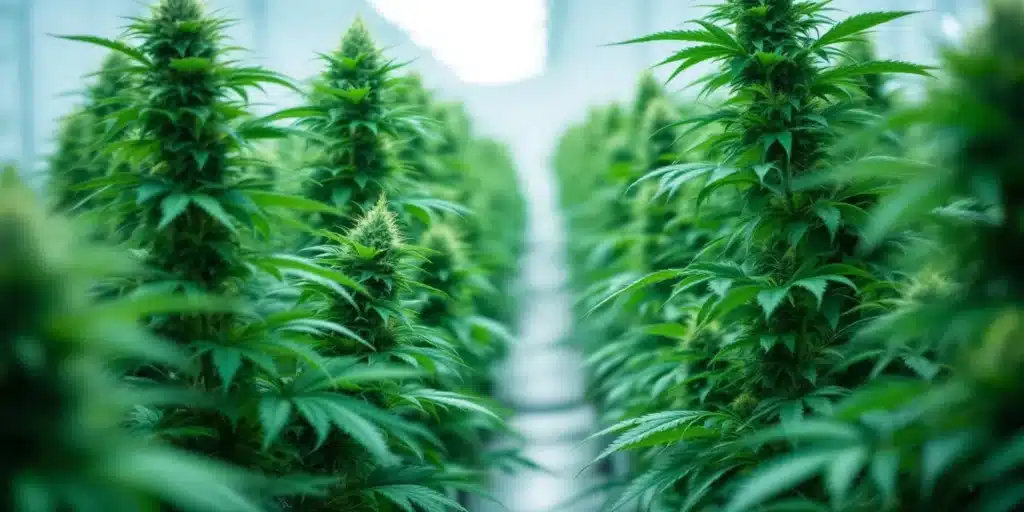
Cannabis Plant Diseases: Viral Diseases
Tobacco Mosaic Virus (TMV)
Causes and Lifecycle: TMV is a highly stable virus that can survive in plant debris, soil, and on surfaces such as tools and equipment. It is mechanically transmitted through handling or using contaminated tools.
Symptoms: Infected plants display a distinctive mottling and distortion of the leaves, reduced growth, and irregular fruit development. The virus can severely impact the aesthetic and commercial value of the crop.
Management Strategies: Management focuses on prevention through strict sanitation practices, including disinfecting tools and equipment, and avoiding smoking near plants, as tobacco products can harbor the virus. Resistant strains offer the best protection against TMV.
Hemp Streak Virus (HSV)
Causes and Lifecycle: HSV is less understood than other cannabis pathogens but is known to cause streaking and stunting in infected plants. The virus is thought to be mechanically transmitted.
Symptoms: Symptoms include yellow streaking of the leaves, stunted growth, and general plant weakness. The impact on yield and quality can be significant.
Management Strategies: As with TMV, prevention through sanitation and the use of resistant strains is key. Avoiding the use of tools and equipment between infected and healthy plants can reduce the spread of HSV.

Prevention and Management Strategies
Cannabis Plant Diseases: Enhanced Cultural Practices
Cultural practices are the foundation of disease prevention in cannabis cultivation. These practices aim to create an environment less conducive to pathogen survival and proliferation.
- Soil Management: Ensuring healthy soil is paramount. This involves regular testing and amendment based on the soil’s nutritional and pH needs. Incorporating organic matter can improve drainage and aeration, reducing the risk of root diseases.
- Optimal Plant Spacing: Adequate spacing between plants promotes air circulation, reducing humidity levels around the plant canopy and minimizing the risk of fungal diseases like powdery mildew and botrytis.
- Crop Rotation and Diversity: Rotating cannabis with non-susceptible crops can disrupt the lifecycle of pathogens. Introducing plant diversity can also enhance ecosystem resilience and reduce disease spread.
Cannabis Plant Diseases: Advanced Environmental Control
Controlling the growing environment, particularly in indoor and greenhouse settings, is crucial for disease prevention.
- Climate Control Systems: Implementing advanced climate control systems can help maintain optimal temperature and humidity levels, crucial for minimizing the risk of fungal and bacterial diseases.
- Water Management: Utilizing drip irrigation or other precision watering techniques can ensure plants receive the necessary water without creating excessively moist conditions that promote disease.
- Air Filtration and Circulation: High-efficiency particulate air (HEPA) filters can remove spores and pathogens from the air, while strategic placement of fans can improve circulation, reducing humidity and deterring airborne diseases.
Cannabis Plant Diseases: Biological Control Measures
The use of biological control agents offers a sustainable alternative to chemical pesticides, enhancing the ecological balance within the cultivation area.
- Beneficial Microorganisms: Introducing beneficial bacteria and fungi, such as Bacillus subtilis or Trichoderma harzianum, can outcompete or inhibit the growth of pathogenic organisms.
- Biopesticides: Derived from natural materials, biopesticides can target specific pests and diseases with minimal impact on non-target species and the environment. Examples include neem oil and pyrethrin-based products.
Cannabis Plant Diseases: Genetic Resistance and Plant Breeding
Developing and selecting cannabis strains with genetic resistance to common pathogens is an emerging and promising disease management strategy.
- Resistant Varieties: Breeding programs focused on genetic resistance can produce plants less susceptible to diseases like fusarium wilt, powdery mildew, and TMV. Cultivators should prioritize these strains when planning their crops.
- Molecular Techniques: Advanced genetic and molecular breeding techniques, including CRISPR-Cas9 gene editing, offer potential for developing disease-resistant cannabis strains with precision.
Cannabis Plant Diseases: Technological Innovations
Leveraging technology can significantly enhance disease detection, monitoring, and management in cannabis cultivation.
- Spectral Imaging and Remote Sensing: These technologies can detect subtle changes in plant health before visible symptoms appear, allowing for early intervention.
- Data Analytics and Predictive Modeling: Big data and AI can analyze patterns from environmental conditions, plant genetics, and known disease outbreaks to predict disease risks and inform management strategies.
Cannabis Plant Diseases: Integrated Pest Management (IPM)
IPM remains a cornerstone of disease management, integrating multiple strategies to manage diseases in a more holistic and sustainable manner.
- Regular Monitoring: Routine inspection of plants for signs of stress or disease allows for early detection and management.
- Threshold-Based Interventions: Applying treatments only when necessary and based on established thresholds can minimize chemical use and environmental impact.
- Educational Outreach: Training staff and stakeholders on disease identification, prevention, and management practices is essential for maintaining a healthy cultivation environment.
The prevention and management of cannabis plant diseases require a multifaceted approach that combines traditional agricultural practices with modern technology and ecological management strategies. By implementing a comprehensive IPM program, utilizing genetic advancements for disease resistance, and leveraging technological innovations for environmental control and disease monitoring, cultivators can effectively manage disease pressures. This proactive and integrated approach not only ensures the health and productivity of cannabis crops but also supports sustainable cultivation practices that are crucial for the long-term viability of the cannabis industry.

Monitoring and Diagnosis
Regular monitoring and early diagnosis are critical components of effective disease management in cannabis cultivation. This includes routine inspection of plants for signs of disease, accurate identification of pathogens, and the implementation of appropriate management strategies. Advanced diagnostic tools, such as molecular techniques and remote sensing technologies, can aid in the early detection and identification of plant diseases, facilitating timely and targeted interventions.
Advanced Monitoring Techniques
Cannabis Plant Diseases: Regular Visual Inspections
- Scheduled Scouting: Implement a structured schedule for visual inspections of the cannabis plants, focusing on early signs of disease such as discoloration, spots, wilting, or unusual growth patterns. Trained personnel can spot minor changes that might indicate the onset of a disease.
- Symptom Cataloging: Use a digital catalog or database to record symptoms observed during inspections, including photographs and detailed descriptions. This aids in tracking disease progression and facilitates accurate diagnosis.
Cannabis Plant Diseases: Environmental Monitoring
- Sensor Technology: Deploy sensors throughout the cultivation area to continuously monitor environmental conditions such as temperature, humidity, CO2 levels, and soil moisture. These data can help identify conditions conducive to disease outbreaks.
- Climate Control Systems: Advanced climate control systems can automatically adjust conditions to avoid environments that favor the development of specific pathogens, based on the data received from environmental sensors.
Cannabis Plant Diseases: Plant Health Imaging
- Spectral Imaging for Cannabis Plant Diseases: Utilize spectral imaging technology to detect changes in cannabis plant health that are not visible to the naked eye. Different wavelengths can reveal stress signatures in cannabis plants, indicating potential cannabis plant diseases before symptoms appear.
- Thermal Imaging in Cannabis Disease Management : Thermal cameras can identify areas of a cannabis plant experiencing stress due to disease or pest infestation by detecting variations in temperature across the plant canopy. This technique is particularly effective in the early detection of cannabis plant diseases, allowing for timely intervention and management.
Diagnostic Tools and Techniques
Cannabis Plant Diseases: Laboratory Testing
- Pathogen Identification: When a disease is suspected, samples of affected plant tissue can be sent to a laboratory for analysis. Techniques such as PCR (Polymerase Chain Reaction) testing can identify the presence of specific pathogens at the genetic level.
- Soil and Water Testing: Regular testing of soil and water for pathogens can preemptively identify potential sources of disease, allowing for corrective measures before plants are affected.
Cannabis Plant Diseases: Mobile Diagnostic Kits
- On-site Testing: Portable diagnostic kits enable on-site testing for common pathogens, providing rapid results and allowing for immediate decision-making regarding disease management.
- Digital Microscopy: Compact, high-resolution digital microscopes can be used in the field to examine plant tissues closely, helping to identify pathogens and pest infestations that require magnification.
Implementing a Surveillance System
Cannabis Plant Diseases: Integrated Disease Management Software
- Digital Platforms: Utilize comprehensive agriculture or cannabis-specific management software to integrate data from visual inspections, sensor monitoring, and diagnostic tests. These platforms can analyze data to predict disease risks and recommend preventive actions.
- Alert Systems: Set up automated alerts for when environmental conditions reach thresholds conducive to disease development or when unusual plant health indicators are detected by imaging technologies.
Cannabis Plant Diseases: Training and Education
- Staff Training: Invest in regular training sessions for cultivation staff on the latest monitoring techniques, disease symptoms, and the proper use of diagnostic tools in the context of Cannabis Plant Diseases. Knowledgeable staff are the first line of defense against crop diseases, particularly those affecting cannabis plants. Ensuring your team is well-versed in identifying and managing Cannabis Plant Diseases not only enhances the overall health of your crop but also optimizes your cultivation operation’s productivity and sustainability.
- Continuous Learning: Stay updated on the latest developments in Cannabis Plant Diseases, pathology, and disease management through professional development courses, industry conferences, and scientific literature. The field of cannabis cultivation is rapidly evolving, with new research and techniques emerging regularly. By committing to continuous learning, you ensure that your cultivation practices remain at the forefront of the industry, effectively managing Cannabis Plant Diseases and promoting a healthy, thriving cannabis crop.
Future Perspectives
As the cannabis industry continues to grow, research into plant diseases and their management will become increasingly important. Advances in genetics, biotechnology, and cultivation practices offer promising avenues for the development of disease-resistant cannabis varieties and innovative management strategies. Collaboration between researchers, cultivators, and industry stakeholders will be key to addressing the challenges posed by cannabis plant diseases and ensuring the sustainable growth of this valuable crop.
Advanced Management Techniques for Cannabis Diseases
Cannabis Plant Diseases: Integrated Pest Management (IPM)
IPM is a holistic approach to disease and pest control that combines biological, cultural, physical, and chemical tools in a way that minimizes economic, health, and environmental risks. IPM strategies for cannabis diseases might include:
- Monitoring and Identification: Regular scouting for pests and diseases, combined with accurate identification, forms the foundation of an effective IPM program. This proactive approach enables early intervention and reduces the need for chemical controls.
- Biological Control: The use of natural enemies, such as beneficial insects, mites, and microbial agents, can help control pest populations and reduce disease incidence. For example, introducing predatory mites can effectively manage spider mite outbreaks, which are common in cannabis cultivation.
- Cultural Practices: Implementing best practices such as crop rotation, proper plant spacing, and sanitation can significantly reduce disease pressure. These practices disrupt the lifecycle of pathogens and pests, reducing their impact on the crop.
- Physical and Mechanical Controls: Barriers, traps, and other physical or mechanical tools can help reduce the introduction and spread of diseases. For instance, using high-quality filters in ventilation systems can prevent the entry of airborne pathogens.
- Chemical Controls: When necessary, targeted application of pesticides and fungicides can be used as part of an IPM strategy. Selecting the appropriate chemical control, based on the specific pathogen and the stage of plant growth, is critical to minimizing harm to the plant, the environment, and end consumers.
Cannabis Plant Diseases: Soil Health and Disease Suppression
Soil health plays a pivotal role in the overall health of cannabis plants and their resilience to diseases. Practices that enhance soil health include:
- Organic Matter Addition: Incorporating compost or other organic matter improves soil structure, water retention, and nutrient availability, creating a more supportive environment for plant growth.
- Beneficial Microbes: Soil amendments with beneficial microbes, such as mycorrhizae and Trichoderma, can enhance nutrient uptake and help suppress soil-borne pathogens.
- Cover Cropping and Mulching: These practices help maintain soil moisture, reduce weed pressure, and add organic matter to the soil, contributing to its overall health and disease resistance.
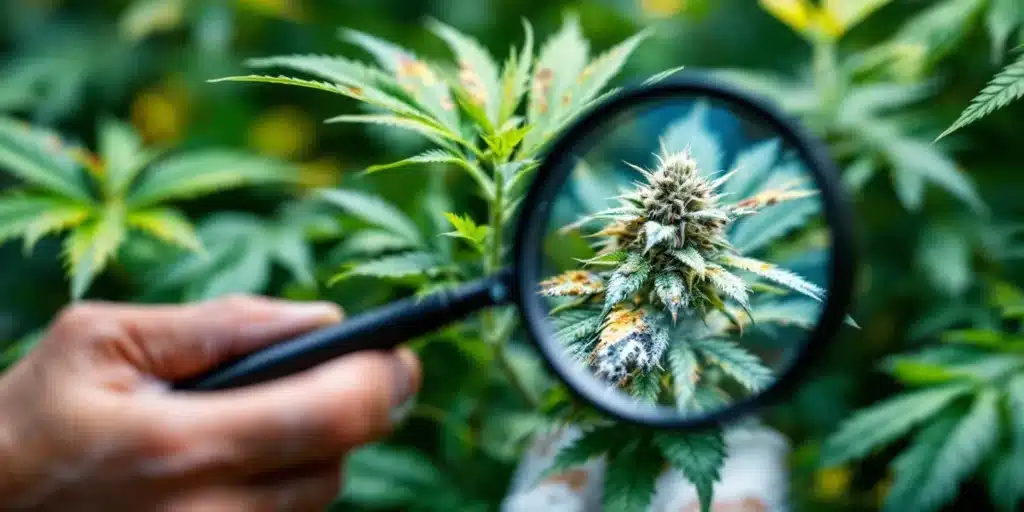
Technological Advances in Disease Management
The cannabis industry benefits from technological advances that improve disease detection, monitoring, and management.
Cannabis Plant Diseases: Remote Sensing and Spectral Analysis
Drones equipped with multispectral cameras can monitor large cultivation areas, detecting changes in plant health before visible symptoms appear. This early detection allows for timely intervention, potentially saving large portions of the crop from disease outbreaks.
Cannabis Plant Diseases: Artificial Intelligence and Machine Learning
AI and machine learning algorithms can analyze data from various sources, including remote sensing, weather models, and historical disease outbreaks, to predict disease risks and recommend management strategies. These tools can become invaluable for large-scale cannabis producers, enabling precision agriculture practices that optimize resource use and mitigate disease impacts.
The Future of Cannabis Disease Research
Ongoing research into cannabis diseases focuses on exploring pathogen biology, host-pathogen interactions, and the environmental factors that influence disease development. Future research directions include:
- Genetic Resistance: Identifying and breeding cannabis strains with natural resistance to common pathogens can reduce reliance on chemical controls and improve crop sustainability.
- Biopesticides: Developing and testing biopesticides that target specific cannabis pathogens without harming beneficial organisms offers a promising avenue for safe, effective disease control.
- Climate-Resilient Cultivation Practices: As climate change impacts agricultural practices globally, developing cultivation techniques that are resilient to changing environmental conditions is critical for the sustainable production of cannabis.
Effective management of cannabis plant diseases requires an integrated approach that combines preventive measures, accurate diagnosis, and timely intervention. Advances in technology, research, and cultivation practices continue to provide new tools and strategies for disease management, ensuring the health and productivity of cannabis crops. As the cannabis industry evolves, so too will the methods for managing plant diseases, promising a future where sustainable, high-yield cultivation is the norm.
By staying informed about the latest developments in disease management and adopting a holistic approach to cultivation, growers can mitigate the impact of diseases on their crops, ensuring a thriving, resilient cannabis industry.

